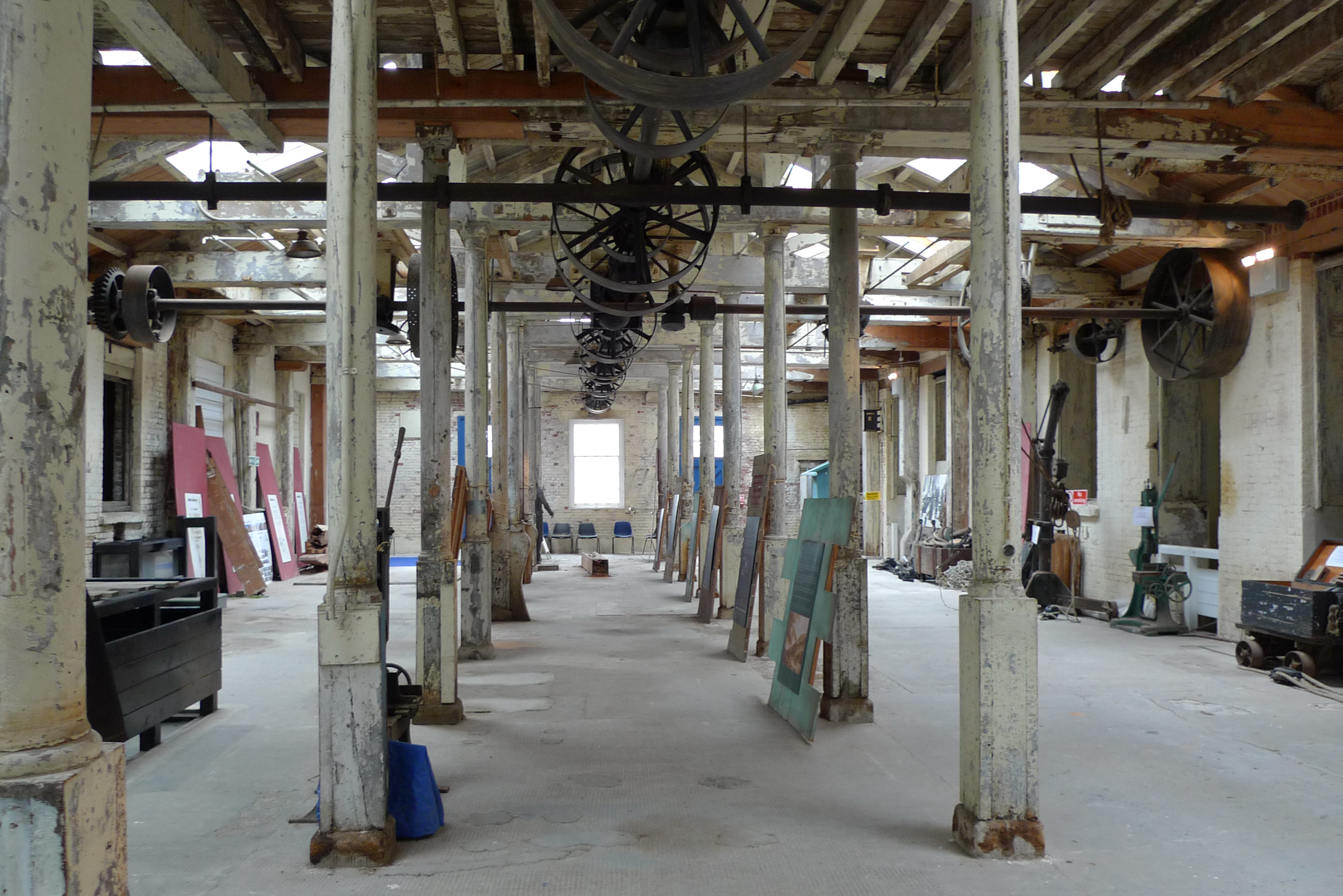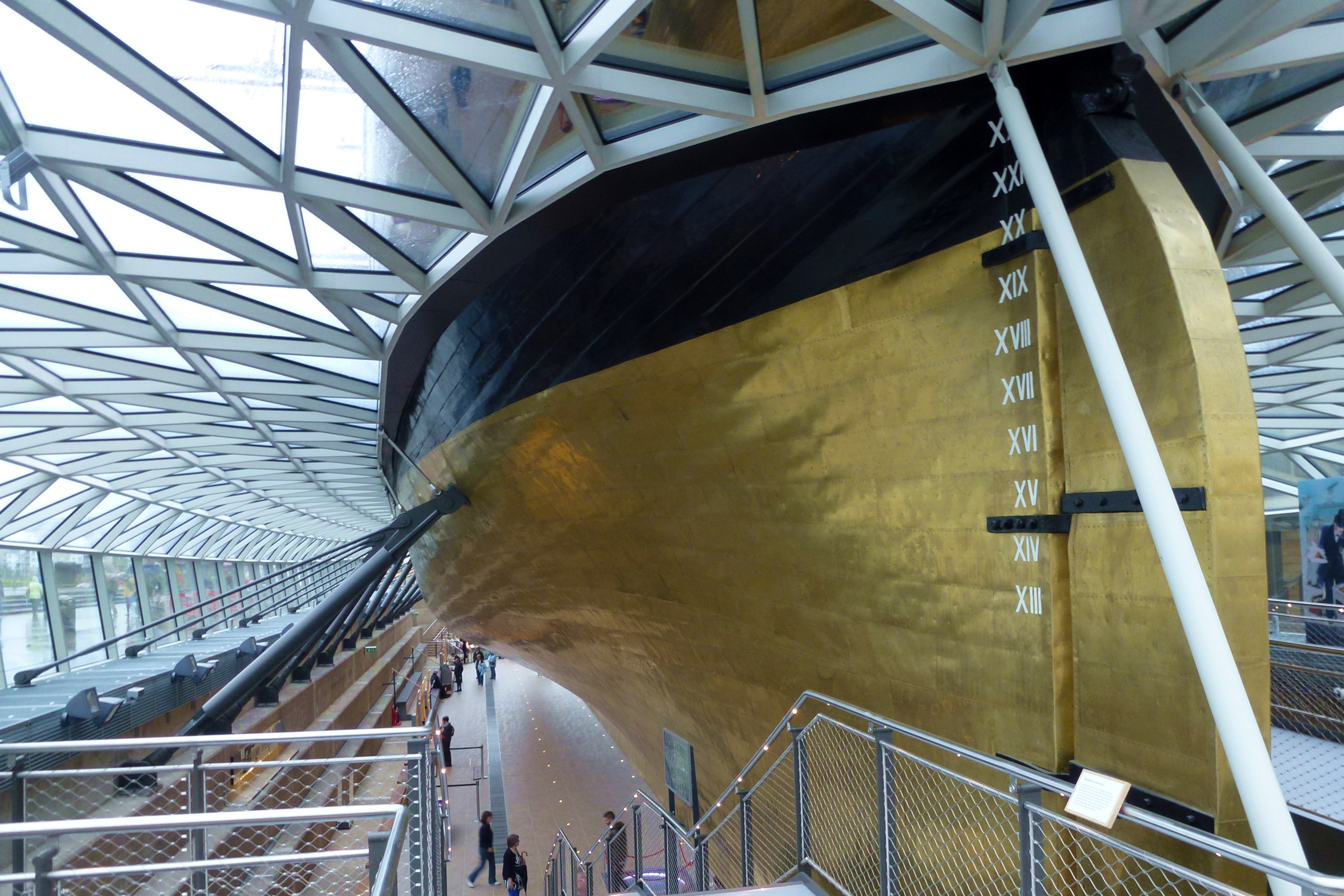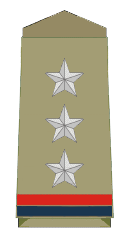|
Portsmouth Block Mills
The Portsmouth Block Mills form part of the Portsmouth Dockyard at Portsmouth, Hampshire, England, and were built during the Napoleonic Wars to supply the British Royal Navy with pulley blocks. They started the age of mass-production using all-metal machine tools (designed chiefly by Marc Isambard Brunel), and are regarded as one of the seminal buildings of the British Industrial Revolution. They are also the site of the first stationary steam engines used by the Admiralty. Since 2003 English Heritage has been undertaking a detailed survey of the buildings and the records relating to the machines. Development of Portsmouth Dockyard The Royal Navy had evolved with Britain's development by the middle of the eighteenth century into what has been described as the greatest industrial power in the western world. The Admiralty and Navy Board began a programme of modernisation of dockyards at Portsmouth and Plymouth such that by the start of the war with Revolutionary France they ... [...More Info...] [...Related Items...] OR: [Wikipedia] [Google] [Baidu] |
Block Mill (Building Number 1
Block or blocked may refer to: Arts, entertainment and media Broadcasting * Block programming, the result of a programming strategy in broadcasting * W242BX, a radio station licensed to Greenville, South Carolina, United States known as ''96.3 the Block '' * WFNZ-FM, a radio station licensed to Harrisburg, North Carolina, United States, branded as ''92.7 The Block'' * "Blocked", an episode of the television series ''The Flash'' Music * Block Entertainment, a record label * Blocks Recording Club, a record label * Woodblock (instrument), a small piece of slit drum made from one piece of wood and used as a percussion instrument * "Blocks", by C418 from ''Minecraft – Volume Beta'', 2013 Toys * Toy block, one of a set of wooden or plastic pieces, of various shapes * Unit block, a type of standardized wooden toy block for children Video games * Blocked (video game), a puzzle game for the iPhone and iPod Touch Building and construction * Concrete block, cinder block or cement b ... [...More Info...] [...Related Items...] OR: [Wikipedia] [Google] [Baidu] |
Plymouth
Plymouth ( ) is a port city status in the United Kingdom, city and unitary authority in Devon, South West England. It is located on Devon's south coast between the rivers River Plym, Plym and River Tamar, Tamar, about southwest of Exeter and southwest of London. It is the most populous city in Devon. Plymouth's history extends back to the Bronze Age, evolving from a trading post at Mount Batten into the thriving market town of Sutton, which was formally re-named as Plymouth in 1439 when it was made a borough status in the United Kingdom, borough. The settlement has played a significant role in English history, notably in 1588 when an English fleet based here defeated the Spanish Armada, and in 1620 as the departure point for the Pilgrim Fathers to the New World. During the English Civil War, the town was held by the Roundhead, Parliamentarians and was besieged between 1642 and 1646. In 1690 a dockyard was established on the River Tamar for the Royal Navy and Plymouth grew as ... [...More Info...] [...Related Items...] OR: [Wikipedia] [Google] [Baidu] |
Copper Sheathing
Copper sheathing is a method for protecting the hull of a wooden vessel from attack by shipworm, barnacles and other marine growth through the use of copper plates affixed to the surface of the hull, below the waterline. It was pioneered and developed by the Royal Navy during the 18th century. In antiquity, ancient Chinese used copper plates while ancient Greeks used lead plates to protect the underwater hull. Development Deterioration of the hull of a wooden ship was a significant problem during the Age of Sail. Ships' hulls were under continuous attack by shipworm, barnacles and other marine growth, all of which had some adverse effect on the ship, be it structurally, in the case of the worm, or affecting speed and handling in the case of the weeds. The most common methods of dealing with these problems were through the use of wood, and sometimes lead, sheathing. Expendable wood sheathing effectively provided a non-structural skin to the hull for the worm to attack, and could ... [...More Info...] [...Related Items...] OR: [Wikipedia] [Google] [Baidu] |
Rolling Mill
In metalworking, rolling is a metal forming process in which metal stock is passed through one or more pairs of rolls to reduce the thickness, to make the thickness uniform, and/or to impart a desired mechanical property. The concept is similar to the rolling of dough. Rolling is classified according to the temperature of the metal rolled. If the temperature of the metal is above its recrystallization temperature, then the process is known as hot rolling. If the temperature of the metal is below its recrystallization temperature, the process is known as cold rolling. In terms of usage, hot rolling processes more tonnage than any other manufacturing process, and cold rolling processes the most tonnage out of all cold working processes... Roll stands holding pairs of rolls are grouped together into rolling mills that can quickly process metal, typically steel, into products such as structural steel (I-beams, angle stock, channel stock), bar stock, and rails. Most steel mill ... [...More Info...] [...Related Items...] OR: [Wikipedia] [Google] [Baidu] |
Clerk (position)
A clerk is a white-collar worker who conducts record keeping as well as general office tasks, or a worker who performs similar sales-related tasks in a retail environment. The responsibilities of clerical workers commonly include Records management, record keeping, filing, staffing service counters, screening callers, and other administrative tasks. In City of London Livery company, livery companies, the clerk is the chief executive officer. History and etymology The word ''clerk'' is derived from the Latin ''clericus'' meaning "cleric" or "clergyman", which is the Latinisation of names, latinisation of the Greek language, Greek ''κληρικός'' (''klērikos'') from a word meaning a "lot" (in the sense of drawing lots) and hence an "apportionment" or "area of land". Henry George Liddell, Robert S ... [...More Info...] [...Related Items...] OR: [Wikipedia] [Google] [Baidu] |
Chemists
A chemist (from Greek ''chēm(ía)'' alchemy; replacing ''chymist'' from Medieval Latin ''alchemist'') is a graduated scientist trained in the study of chemistry, or an officially enrolled student in the field. Chemists study the composition of matter and its properties. Chemists carefully describe the properties they study in terms of quantities, with detail on the level of molecules and their component atoms. Chemists carefully measure substance proportions, chemical reaction rates, and other chemical properties. In Commonwealth English, pharmacists are often called chemists. Chemists use their knowledge to learn the composition and properties of unfamiliar substances, as well as to reproduce and synthesize large quantities of useful naturally occurring substances and create new artificial substances and useful processes. Chemists may specialize in any number of subdisciplines of chemistry. Materials scientists and metallurgists share much of the same education and skills wi ... [...More Info...] [...Related Items...] OR: [Wikipedia] [Google] [Baidu] |
Architects
An architect is a person who plans, designs, and oversees the construction of buildings. To practice architecture means to provide services in connection with the design of buildings and the space within the site surrounding the buildings that have human occupancy or use as their principal purpose. Etymologically, the term architect derives from the Latin , which derives from the Greek (''-'', chief + , builder), i.e., chief builder. The professional requirements for architects vary from location to location. An architect's decisions affect public safety, and thus the architect must undergo specialised training consisting of advanced education and a ''practicum'' (or internship) for practical experience to earn a license to practice architecture. Practical, technical, and academic requirements for becoming an architect vary by jurisdiction though the formal study of architecture in academic institutions has played a pivotal role in the development of the profession. Origins ... [...More Info...] [...Related Items...] OR: [Wikipedia] [Google] [Baidu] |
Drafter
A drafter (also draughtsman / draughtswoman in British English, British and English in the Commonwealth of Nations, Commonwealth English, draftsman / draftswoman, drafting technician, or CAD technician in American English, American and Canadian English) is an engineering technician who makes detailed technical drawings or CAD Design, CAD designs for machinery, buildings, electronics, infrastructure, sections, etc. Drafters use List of 3D modeling software, computer software and manual sketches to convert the designs, plans, and layouts of engineers and architects into a set of technical drawings. Drafters operate as the supporting developers and sketch engineering designs and drawings from preliminary design concepts. Overview In the past, drafters sat or stood at drawing boards and used pencils, pens, compasses, rulers, protractors, triangles, and other drafting devices to prepare a drawing by hand. From the 1980s through 1990s, board drawings were going out of style as the ... [...More Info...] [...Related Items...] OR: [Wikipedia] [Google] [Baidu] |
Engineers
Engineers, as practitioners of engineering, are professionals who invent, design, build, maintain and test machines, complex systems, structures, gadgets and materials. They aim to fulfill functional objectives and requirements while considering the limitations imposed by practicality, regulation, safety and cost. "Science is knowledge based on our observed facts and tested truths arranged in an orderly system that can be validated and communicated to other people. Engineering is the creative application of scientific principles used to plan, build, direct, guide, manage, or work on systems to maintain and improve our daily lives." The word ''engineer'' (Latin , the origin of the Ir. in the title of engineer in countries like Belgium, The Netherlands, and Indonesia) is derived from the Latin words ("to contrive, devise") and ("cleverness"). The foundational qualifications of a licensed professional engineer typically include a four-year bachelor's degree in an engineering di ... [...More Info...] [...Related Items...] OR: [Wikipedia] [Google] [Baidu] |
Inspector General Of Naval Works
Inspector, also police inspector or inspector of police, is a police rank. The rank or position varies in seniority depending on the organization that uses it. Australia The rank of Inspector is present in all Australian police forces except for the Northern Territory. Where it exists, it is generally the next senior rank from Senior Sergeant, and is the lowest commissioned rank. Uniformed officers of this rank wear epaulettes with three pips, matching a Captain in the army. In addition to the general rank of inspector, some police forces use other ranks such as detective inspector and district inspector. Austria In Austria a similar scheme was used as in Germany. At some point the police inspector was completely removed from the list of service ranks. The current police service has an inspectors service track with ''Inspektor'' being the entry level – it is followed by ''Revierinspektor'' (precinct inspector), ''Gruppeninspektor'' (group inspector), ''Bezirksinspektor'' ... [...More Info...] [...Related Items...] OR: [Wikipedia] [Google] [Baidu] |
Samuel Bentham
Brigadier General Sir Samuel Bentham (11 January 1757 – 31 May 1831) was an England, English mechanical engineering, mechanical engineer and naval architect credited with numerous innovations, particularly related to naval architecture, including weapons. He was the only surviving sibling of philosopher Jeremy Bentham, with whom he had a close bond. Early life Samuel Bentham was one of two surviving children of Jeremiah Bentham. His father was an attorney, and his older brother was the philosopher Jeremy Bentham, five other siblings having died in infancy or early childhood, and their mother dying in 1766. At the age of 14, Bentham was apprenticed to a shipwright at Woolwich Dockyard, serving there and at Chatham Dockyard, before completing his 7-year training at the Naval Academy in HMNB Portsmouth, Portsmouth. Career Russia In 1780 he moved to Russia, where he was employed in the service of Grigori Aleksandrovich Potemkin, Prince Potemkin, who had an establishment design ... [...More Info...] [...Related Items...] OR: [Wikipedia] [Google] [Baidu] |
Chain Pumps
The chain pump is type of a water pump in which several circular discs are positioned on an endless chain. One part of the chain dips into the water, and the chain runs through a tube, slightly bigger than the diameter of the discs. As the chain is drawn up the tube, water becomes trapped between the discs and is lifted to and discharged at the top. Chain pumps were used for centuries in the ancient Middle East, Europe, and China. In the Near East and Europe The earliest evidence for this device is in a Babylonian text from about 700 B.C. They were commonly powered by humans or animals. The device then appeared in ancient Egypt from about 200 B.C., featuring a pair of gear-wheels. A version of the chain pump was used in ancient Greece and Rome, sometimes with pots, or scoops fixed to the chain, which, as they passed over the top pulley, tipped the water out; a 2nd-century example is preserved in London. Philo of Byzantium wrote of such a device in the 2nd century B.C.; the historia ... [...More Info...] [...Related Items...] OR: [Wikipedia] [Google] [Baidu] |









